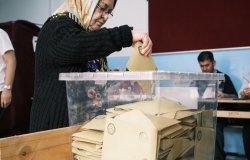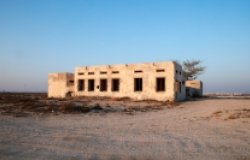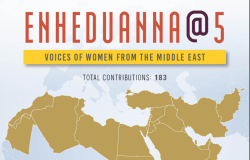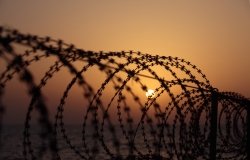
A blog of the Middle East Women's Initiative
Unraveling the Multi-Faceted Impact of Armed Conflict on Women in the Gaza Strip
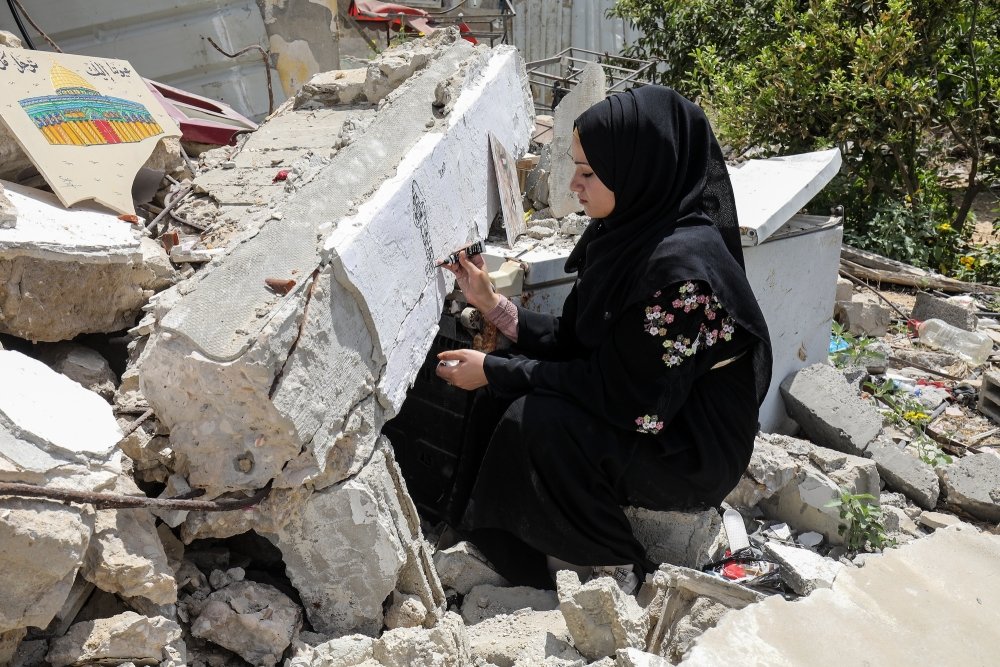
shutterstock.com/Anas-Mohammed
Gender-based violence and discrimination are persistent across societies, and rates across Palestine were already unacceptable before the current crisis.
The toll of armed conflict is felt heavily across civilian populations, as infrastructure is destroyed, civilians are killed, and the very social fabric of communities is unraveled. Most combatants across contexts are men, and in most wars, battle-related injuries affect men disproportionately. Typically, more women are likely to suffer from the indirect effects of war and die in greater numbers in the post-conflict period from ailments like malnutrition, infectious disease, poor sexual and reproductive health services, and deterioration of living conditions, especially if the male wage earner of a family was killed.
Disproportionate toll
However, in the current Israeli war in the Gaza Strip, what has garnered the attention of human rights and humanitarian actors is the extent to which civilians, including women and children, have borne the brunt of much of the direct violence. Of the estimated 17,177 people in Gaza killed between October 7 and December 8, the United Nations Office for the Coordination of Humanitarian Affairs (OCHA) estimates that about 70% are women and children.
At the same time, as many women who have survived thus far have been left as the sole caretakers of their remaining family members, they have directly felt the burden of attempting to find food, water, medical care, and even a secure shelter for their families. As Palestine reports one of the lowest female labor participation rates in the world, despite their high level of education, there will be significant economic barriers to these women as they attempt to rebuild their lives.
Today, after being displaced from their homes or having their homes destroyed, many families have taken shelter in overcrowded and underserviced shelters, where conditions are ripe for rapid deterioration of health and well-being, especially for women and children.
There are an estimated 50,000 pregnant women in Gaza who have no safe place to give birth, poor access to clean water and food, and little medical care available to assist with postnatal care. An estimated 15% of those births will have complications that require medical intervention that is not available. Doctors have reported having to deliver babies and even perform c-sections without anesthesia, and mothers who are able to arrive at a medical facility are asked to leave shortly after delivery due to lack of space. Unfortunately, some mothers who managed to deliver in these circumstances still lost their babies due to the lack of electricity for incubators.
New mothers also face significant risks to their health and the health of their babies. Breastfeeding mothers are advised to drink at least 3 liters of water per day, along with eating a healthy diet—this is no longer an option for women in Gaza. Women report being unable to produce sufficient milk or their babies seem too stressed to nurse. Lack of baby formula, diapers, and other basic necessities also complicate the experience for new mothers.
When women were able to secure food, they limited themselves to one meal per day in order to prioritize feeding their children.
Health, education, violence
Access to reproductive health services has also deteriorated. Women and girls can no longer find menstrual hygiene products and regular access to bathrooms, as many shelters report only one bathroom per 150 people. Inadequate menstrual care increases the risk of infections that the health system of Gaza has no capacity to manage and could cause outbreaks of preventable illness. Inadequate disposal of these products also increases the risk of infection if contaminated water or discarded products attract disease-carrying vectors, like flies and rodents. Women with intrauterine contraceptive devices (IUDs) are reporting infections and bleeding due to poor living conditions without access to medical care, while women taking hormonal birth control have lost access to pharmacies and providers to maintain their medication. Some women have resorted to off-label use of hormonal medications to delay their period amid these conditions.
Of course, it is not just the unique health needs of women and girls that are at risk in Gaza. For many, despite the lack of economic opportunity in Gaza, women and girls saw education as one of their potential paths to better their lives in harsh circumstances, despite some persistence of gender norms that included expectations about marriage and motherhood. Today, all children in Gaza are out of school, and almost all the universities in the territory have been destroyed. Even when the violence ends, it remains unclear how people from Gaza, especially women and girls, will be able to resume their education and seek the opportunities education would open for them.
Gender-based violence and discrimination are persistent across societies, and rates across Palestine were already unacceptable before the current crisis. Unfortunately, the societal fragmentation, economic deterioration, and living conditions of war increase the risk for women and girls in settings like Gaza. It is well known that displaced women are at increased risk of violence and abuse in overcrowded shelter settings, and there is almost no capacity for monitoring, counseling, or first aid required to respond to incidents. Many young girls have been orphaned, leaving them extremely vulnerable if they have no surviving extended family. Further, conditions of abject poverty and marginalization increase the risk of child marriage, which was already higher in Gaza than in the West Bank.
The death toll and destruction of civilian infrastructure in Gaza in such a short time, coupled with an Israeli-imposed siege that has prevented the import of needed goods, has caused a humanitarian catastrophe with little precedent in modern times—the chief of the UN OCHA called the situation, “The worst ever… I don’t think I’ve seen anything like this before.” It has become increasingly clear that there is no one and nowhere that is safe in Gaza, especially while the bombs continue to drop. Even after they stop, however, many questions remain about what type of society will be left. No community can successfully rebuild without the participation of all its members, including women. Their specific needs, including health, education, and economy, must be considered in any efforts meant to benefit those in Gaza and those displaced elsewhere.
The views expressed in this article are those of the author and do not express the official position of the Wilson Center.
About the Author

Yara Asi

Middle East Program
The Wilson Center’s Middle East Program serves as a crucial resource for the policymaking community and beyond, providing analyses and research that helps inform US foreign policymaking, stimulates public debate, and expands knowledge about issues in the wider Middle East and North Africa (MENA) region. Read more

